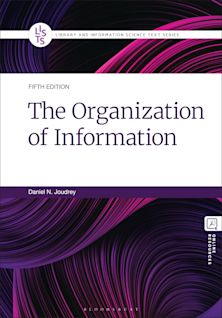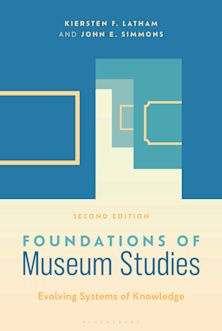- Home
- ACADEMIC
- Library & Information Science
- Cataloging and Classification
- Moving Image Cataloging
Moving Image Cataloging
How to Create and How to Use a Moving Image Catalog
Moving Image Cataloging
How to Create and How to Use a Moving Image Catalog
You must sign in to add this item to your wishlist. Please sign in or create an account
Description
Libraries, archives, and museums hold a wide variety of moving images. all of which require the same level of attention to issues of organization and access as their print counterparts. Consequently, the people who create collection level records and metadata for these resources need to be equally conversant in the principles of cataloging. Martha Yee covers both descriptive (AACR2R, AMIM, and FIAF rules) and subject cataloging (with a focus on LCSH). In the process, the reader is encouraged to think critically and to be prepared to make decisions in ambiguous situations where solutions to problems are not always obvious or clearly dictated by specific rules.
Table of Contents
Introduction
Chapter 1: Introduction to Moving Image Cataloging
Chapter 2: Introduction to A Data Structure Standard; How to Create a Cataloging Record; Automation Complexities and OPAC Searching
Chapter 3: Moving Image Works, Expressions and Manifestations; Introduction to Uniform Titles; Relationships; Represented and Presented Works
Chapter 4: Work Identification and Authorship; Authority Control
Chapter 5: Complications with Names of Persons and Corporate Bodies; Location of FRBR Entities; OPAC Searching Complications
Chapter 6: Introduction to Subject Analysis
Chapter 7: More on Subject Analysis
Chapter 8: Newsfilm access; OPAC searching
Chapter 9: Subject Access to Fiction; Genre/Form Access
Chapter 10: Digitization and the Future of Cataloging
Exercise Answers
Glossary
Bibliography of Works Consulted
Cataloging Standards Bibliography
Index
Product details
| Published | 30 Oct 2007 |
|---|---|
| Format | Ebook (PDF) |
| Edition | 1st |
| Extent | 288 |
| ISBN | 9780313097218 |
| Imprint | Libraries Unlimited |
| Series | Third Millennium Cataloging |
| Publisher | Bloomsbury Publishing |
About the contributors
Reviews
-
Encouraging the reader to think critically and be prepared to make decisions in ambiguous situations where the solutions might not always be obvious or clearly dictated by rules, Moving Image Cataloging stimulates critical thinking with exercises at the end of each chapter, providing suggested (but not absolute) answers at the end of the book. Primarily geared for catalogers of moving images, the work also teaches how to make decisions that impact the catalog and, more generally, how to search a catalog.
ARBA
-
This is a book which will become a standard work on the subject of cataloguing the moving image, and it needs to be read by those involved in cataloguing in film libraries, archives, and museums, as well as library schools and the more advanced cataloguing courses. Finally, I cannot resist quoting the marvellous dedication at the beginning of the book: 'This book is dedicated to all of the cataloguers who have laboured in the vineyards of bibliographic control for hundreds of years, largely unthanked and unappreciated because, when we do our work well, it is invisible to the catalogue user.'
How true!Program
-
…this is an excellent overview of the challenges, principles, and practices of cataloging moving image materials. It would be a useful textbook for courses on this topic, as well as for in-library training programs.
Library Collections, Acquisitions, & Technical Services
-
Martha Yee is a well-known exponent of moving image cataloguing, and this book is correspondingly authoritative.
The Electronic Library

ONLINE RESOURCES
Bloomsbury Collections
This book is available on Bloomsbury Collections where your library has access.


































